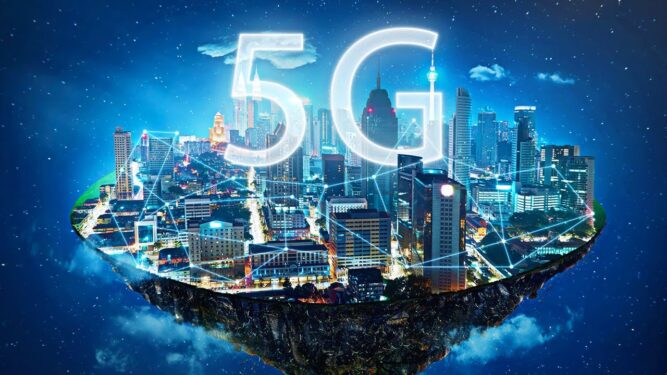AS A tech enthusiast, I have been eagerly anticipating the arrival of 5G for a while now. With the promises of faster download speeds, lower latency and more reliable connections, it’s no wonder that many of us are excited about the possibilities of this new technology.
However, as the rollout of 5G networks continues around the world, it’s becoming clear that the reality of 5G may not be what it’s all cracked up to be.
According to the latest data from Ericsson’s November Mobility Report, 5G subscriptions are expected to reach 780 million by end-2022 with China, the US and South Korea expected to lead in terms of deployment.
While these numbers may seem impressive, the report also emphasises that subscription numbers alone won’t measure 5G’s success. The truth is that the deployment of 5G networks is slow and expensive with many people may not even having access to 5G for years to come.
Let’s explore some of the concerns and challenges associated with 5G and why it may not be the game-changer that many of us had hoped for.
Health concerns
One of the major concerns about 5G is its potential impact on human health. As the deployment of 5G networks continues around the world, some people are worried that the increased exposure to radiofrequency radiation could be harmful to our bodies.
While some studies suggest a potential link between radiofrequency radiation and health problems such as cancer, infertility and electromagnetic hypersensitivity, the scientific community has not yet reached a consensus on this issue.

On the one hand, some experts and organisations such as the World Health Organization (WHO) and the International Commission on Non-Ionizing Radiation Protection (ICNIRP) have stated that the current scientific evidence does not suggest that 5G technology poses a significant risk to human health.
“The exposure from 5G is expected to be similar to or lower than that from existing mobile phone technologies, and any potential health effects are expected to be negligible,” opined ICNIRP chairman Eric van Rongen.
On the other hand, other scientists and organisations have expressed concern about the potential health risks associated with 5G.
Epidemiologist and founder of the Environmental Health Trust Devra Davis has said that 5G radiation has not been proven safe for humans.
“On the contrary, scientists worldwide are calling for a halt to the rollout of 5G, citing health effects ranging from cancer to reproductive harm to electromagnetic hypersensitivity,” she asserted.
While the debate about the safety of 5G is ongoing, it is important that we consider and evaluate all of the available scientific evidence. As we continue to deploy 5G networks, we should prioritise research and studies to further understand any potential health risks and how to mitigate them.
Expensive rollout
Another issue with 5G is the high cost of deploying the necessary infrastructure. Building a 5G network requires a significant amount of investment in new equipment and infrastructure which can be costly for telecommunication companies and governments alike.
According to a report by Deloitte, the total cost of building a nationwide 5G network in the US could range from US$130 bil to US$275 bil. As a comparison, NASA’s budget for its lunar exploration programmes, including the Artemis programme to land humans on the moon by 2024, costs only US$25.2 bil, according to a 2022 fiscal year budget request.
The high cost of 5G deployment can be attributed to a few factors. First, 5G networks require a significant amount of new equipment and infrastructure, including new cell towers and small cells, fibre optic cables, specialised radios and antennas.
Second, the deployment of 5G networks can be more challenging and costly in certain regions such as rural or mountainous areas where there may be limited access to existing infrastructure or difficult terrain to navigate.
Finally, the cost of deployment may also depend on the regulatory environment in a given country, with some governments like the US, China, Japan and the UK providing subsidies or other incentives to encourage the rollout of 5G networks.

Despite the high cost of deployment, many telecommunications companies and governments view 5G as a worthwhile investment. It has the potential to support the development of new applications and services in areas such as healthcare, education and transportation.
Security concerns
While 5G networks offer the promise of faster and more connected devices, there are concerns about the potential security risks that come with this increased connectivity.
As more devices become connected to 5G networks, there is a greater risk of cyber-attacks and data breaches. In addition, the use of new and untested technologies in 5G networks may create vulnerabilities that could be exploited by hackers.
While these security concerns are valid, it’s important to note that telecommunication companies and governments are aware of the potential risks and are taking steps to address them.
For example, the 5G security standards developed by the 3rd Generation Partnership Project (3GPP) include features such as encryption, authentication, and network slicing which can help to protect against cyber-attacks and data breaches.
Additionally, governments and regulatory bodies are also implementing regulations and guidelines to ensure that 5G networks are secure and reliable.
It’s worth noting that security concerns are not unique to 5G networks and that all networks are potentially vulnerable to cyber-attacks and data breaches. Similar concerns were also raised when 4G was introduced commercially in the late 2000s.
While there were some bona fide incidents of security breaches and cyber-attacks on 4G networks like the “Fake ID” vulnerability, the impact was relatively limited and the industry was able to develop effective security measures to address these issues.

The same can be expected for 5G networks, too, as the industry continues to work to develop and implement security measures to protect against potential vulnerabilities and threats.
In conclusion, the introduction of 5G networks represents a significant leap forward in mobile connectivity, promising faster speeds, lower latency, and greater reliability. However, as with any new technology, there are also potential challenges and risks that must be addressed.
Ultimately, the decision of whether to jump onto the 5G bandwagon or not will depend on a wide range of factors, including individual preferences, available infrastructure, and the potential risks and benefits of the technology.
As with any decision involving new technology, it’s important to stay informed and to carefully weigh the potential risks and benefits before making a decision.
So, are you ready to embrace 5G and all the benefits it has to offer? To 5G or not to 5G, that is the question. – May 8, 2023
The author is the chief operating officer of Universiti Tenaga Nasional (UNITEN), and an Associate Professor at the Department of Computing, College of Computing and Informatics, UNITEN. He may be reached at [email protected].
The views expressed are solely of the author and do not necessarily reflect those of Focus Malaysia.









